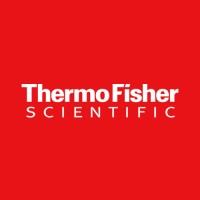Aldo-keto Reductase 1B10 / DyLight 488 / Polyclonal
Product Details
| Description | AKR1B10 Polyclonal Antibody, DyLight 488 conjugate. AKR1B10, also known as Aldo-keto reductase family 1, member B10, AKR1B10 is a monomeric protein that efficiently catalyzes the reduction of aromatic and aliphatic aldehydes and ketones. AKR1B10 is ubiquitously expressed in many human tissues but is highly expressed in small intestine, colon and adrenal gland. This protein is pathogenically involved in diabetic complications and has been reported that AKR1B10 is overexpressed in human tumors, such as liver, breast, and lung cancer, and may play a critical role in the development and progression of cancer.ELISA 1:100-1:2000, ICC 1:5-1:50, IF 1:5-1:50, IHC (F) 1:5-1:50, IHC (P) 1:5-1:50, IP 5 µg, WB 1:500-1:1000 | |
|---|---|---|
| Conjugate | DyLight 488 | |
| Clone | Polyclonal | |
| Target Species | Human | |
| Applications | ELISA, IF, ICC, WB, IP | |
| Supplier | Thermo Fisher Scientific | |
| Catalog # | Sign in to view product details, citations, and spectra | |
| Size | ||
| Price | ||
| Antigen | ||
| Host | ||
| Isotype |
About Aldo-keto Reductase 1B10
This gene encodes a member of the aldo/keto reductase superfamily, which consists of more than 40 known enzymes and proteins. This member can efficiently reduce aliphatic and aromatic aldehydes, and it is less active on hexoses. It is highly expressed in adrenal gland, small intestine, and colon, and may play an important role in liver carcinogenesis. [provided by RefSeq, Jul 2008]
This gene encodes a member of the aldo/keto reductase superfamily, which consists of more than 40 known enzymes and proteins. This member can efficiently reduce aliphatic and aromatic aldehydes, and it is less active on hexoses. It is highly expressed in adrenal gland, small intestine, and colon, and may play an important role in liver carcinogenesis. [provided by RefSeq, Jul 2008]
About DyLight 488
DyLight™ 488 has an excitation peak at 493 nm and an emission peak at 518 nm and is spectrally similar to Alexa Fluor™ 488, fluorescein and FITC. DyLight™ 488 is most commonly used in flow cytometery, and fluorescence microscopy applications.
DyLight™ 488 has an excitation peak at 493 nm and an emission peak at 518 nm and is spectrally similar to Alexa Fluor™ 488, fluorescein and FITC. DyLight™ 488 is most commonly used in flow cytometery, and fluorescence microscopy applications.
Experiment Design Tools
Panel Builders
Looking to design a Microscopy or Flow Cytometry experiment?
Validation References
Reviews & Ratings
| Reviews |
|---|
Looking for more options?
174 Aldo-keto Reductase 1B10 antibodies from over 14 suppliers available with over 19 conjugates.





